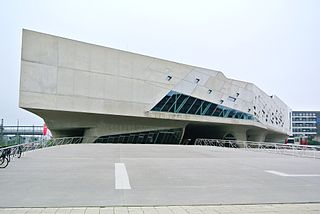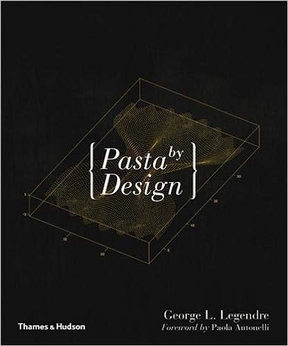
A pattern is a regularity in the world, in human-made design, or in abstract ideas. As such, the elements of a pattern repeat in a predictable manner. A geometric pattern is a kind of pattern formed of geometric shapes and typically repeated like a wallpaper design.
Computational geometry is a branch of computer science devoted to the study of algorithms which can be stated in terms of geometry. Some purely geometrical problems arise out of the study of computational geometric algorithms, and such problems are also considered to be part of computational geometry. While modern computational geometry is a recent development, it is one of the oldest fields of computing with a history stretching back to antiquity.

Juris Hartmanis was a Latvian-born American computer scientist and computational theorist who, with Richard E. Stearns, received the 1993 ACM Turing Award "in recognition of their seminal paper which established the foundations for the field of computational complexity theory".

Theoretical computer science (TCS) is a subset of general computer science and mathematics that focuses on mathematical aspects of computer science such as the theory of computation, formal language theory, the lambda calculus and type theory.
Bio-inspired computing, short for biologically inspired computing, is a field of study which seeks to solve computer science problems using models of biology. It relates to connectionism, social behavior, and emergence. Within computer science, bio-inspired computing relates to artificial intelligence and machine learning. Bio-inspired computing is a major subset of natural computation.
Architectural phenomenology is the discursive and realist attempt to understand and embody the philosophical insights of phenomenology within the discipline of architecture. The phenomenology of architecture is the philosophical study of architecture employing the methods of phenomenology.
Geometric modeling is a branch of applied mathematics and computational geometry that studies methods and algorithms for the mathematical description of shapes. The shapes studied in geometric modeling are mostly two- or three-dimensional, although many of its tools and principles can be applied to sets of any finite dimension. Today most geometric modeling is done with computers and for computer-based applications. Two-dimensional models are important in computer typography and technical drawing. Three-dimensional models are central to computer-aided design and manufacturing (CAD/CAM), and widely used in many applied technical fields such as civil and mechanical engineering, architecture, geology and medical image processing.
Landscape urbanism is a theory of urban design arguing that the city is constructed of interconnected and ecologically rich horizontal field conditions, rather than the arrangement of objects and buildings. Landscape Urbanism, like Infrastructural Urbanism and Ecological Urbanism, emphasizes performance over pure aesthetics and utilizes systems-based thinking and design strategies. The phrase 'landscape urbanism' first appeared in the mid 1990s. Since this time, the phrase 'landscape urbanism' has taken on many different uses, but is most often cited as a postmodernist or post-postmodernist response to the "failings" of New Urbanism and the shift away from the comprehensive visions, and demands, for modern architecture and urban planning.

Ellen Lupton is a graphic designer, curator, writer, critic, and educator. Known for her love of typography, Lupton is the Betty Cooke and William O. Steinmetz Design Chair at Maryland Institute College of Art. Previously she was the Senior Curator of Contemporary Design at Cooper Hewitt, Smithsonian Design Museum in New York City and was named Curator Emerita after 30 years of service. She is the founding director of the Graphic Design M.F.A. degree program at Maryland Institute College of Art (MICA), where she also serves as director of the Center for Design Thinking. She has written numerous books on graphic design for a variety of audiences. She has contributed to several publications, including Print, Eye, I.D., Metropolis, and The New York Times.

Mohsen Mostafavi is an Iranian-American architect and educator. Mostafavi is currently the Alexander and Victoria Wiley Professor of Design at the Harvard Graduate School of Design. From 2008 through 2019, Mostafavi served as the school's dean.
Architectural design optimization (ADO) is a subfield of engineering that uses optimization methods to study, aid, and solve architectural design problems, such as optimal floorplan layout design, optimal circulation paths between rooms, sustainability and the like. ADO can be achieved through retrofitting, or it can be incorporated within the initial construction a building. Methods of ADO might include the use of metaheuristic, direct search or model-based optimisation. It could also be a more rudimentary process involving identification of a perceived or existing problem with a buildings design in the concept design phase.

Computer graphics is a sub-field of computer science which studies methods for digitally synthesizing and manipulating visual content. Although the term often refers to the study of three-dimensional computer graphics, it also encompasses two-dimensional graphics and image processing.

Scott Joel Aaronson is an American theoretical computer scientist and David J. Bruton Jr. Centennial Professor of Computer Science at the University of Texas at Austin. His primary areas of research are quantum computing and computational complexity theory.

Generative design is an iterative design process that generates outputs that meet specified constraints to varying degrees. In a second phase, designers can then provide feedback to the generator that explores the feasible region by selecting preferred outputs or changing input parameters for future iterations. Either or both phases can be done by humans or software. One method is to use a generative adversarial network, which is a pair of neural networks. The first generates a trial output. The second provides feedback for the next iteration.
Ecological urbanism draws from ecology to inspire an urbanism that is more socially inclusive and sensitive to the environment. It is less ideologically driven, than green urbanism or sustainable urbanism. In many ways, ecological urbanism is an evolution of, and a critique of, Landscape Urbanism arguing for a more holistic approach to the design and management of cities. This type of urbanism has a central scope of four main objectives: Compactness, complexity, efficiency, and stability. This model of Urbanism strives to tackle the current challenges of society by intertwining sustainability and urban occupation models. "Ecological urbanism" was coined by architect and planner Miguel Ruano in his 1998 book Eco-Urbanism: Sustainable Human Settlements, 60 Case Studies. The term first appeared as "EcoUrbanism", which is defined as "the development of multi-dimensional sustainable human communities within harmonious and balanced built environments". The term was used later in April 2003 at a conference at the University of Oregon, and again in 2006 in a paper by Jeffrey Hou. Mohsen Mostafavi used the term in the 2007 publication Intervention Architecture and in a lecture at the Canadian Centre for Architecture. Today, ecological urbanism is recognized as a formal academic research topic. Notably, the Harvard University Graduate School of Design has conducted a conference, held an art exhibition, and published a book all centered around ecological urbanism.

Parametric design is a design method in which features, such as building elements and engineering components, are shaped based on algorithmic processes rather than direct manipulation. In this approach, parameters and rules establish the relationship between design intent and design response. The term parametric refers to the input parameters that are fed into the algorithms.

Parametricism is a style within contemporary avant-garde architecture, promoted as a successor to Modern and Postmodern architecture. The term was coined in 2008 by Patrik Schumacher, an architectural partner of Zaha Hadid (1950–2016). Parametricism has its origin in parametric design, which is based on the constraints in a parametric equation. Parametricism relies on programs, algorithms, and computers to manipulate equations for design purposes.

Pasta by Design is a book by George L. Legendre, with a foreword by Paola Antonelli, and photography by Stefano Graziani. It is based on an idea by Marco Guarnieri.
John Michael Pickering was a twentieth-century British sculptor who pioneered the use of mathematics in British art.











